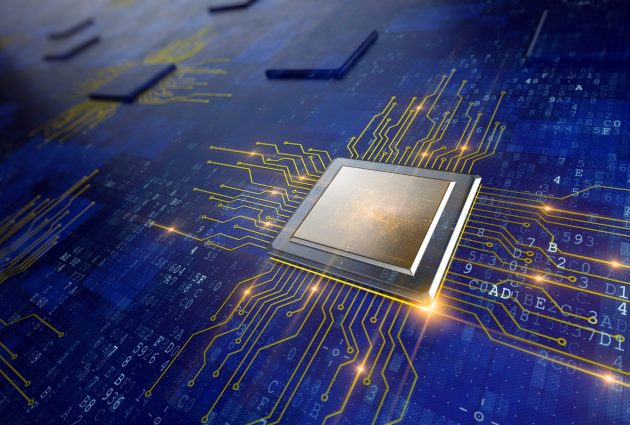
Four key technologies set to fuel the programmable semiconductors market
by CM Staff
Aerospace, automotive, gaming, and retail driving the growth of GPUs, FPGAs, MPUs, and AI accelerators

SANTA CLARA, Calif. — Frost & Sullivan’s recent analysis, Growth Opportunities for Programmable Semiconductor Technologies, finds programmable semiconductors area major revenue contributor in the semiconductors space.
The study analyzes the four key technologies under programmable semiconductors—graphical processing units (GPUs), field-programmable gate arrays (FPGAs), microprocessing units (MPUs), and artificial intelligence accelerators (AI accelerators)—and the factors influencing their development and adoption, applications across various industries and future growth opportunities.
“MPUs are the most prominent programmable semiconductors. They have been used in central processing units (CPUs) in laptops and computers and have seen a sudden surge during the pandemic. As a key growth enabler in the industry, global MPU sales will reach US$74.1 billion by 2024,” said Sushrutha Sadashiva, TechVision senior research analyst at Frost & Sullivan, in a prepared statement. “However, AI accelerators are the emerging segment garnering global attention, owing to their ability to integrate with internet-of-things, smart devices, industry 4.0, and Big Data. The AI accelerator chip market is expected to be the fastest-growing, reaching US$33.51 billion in 2024 from US$10.14 billion in 2020, thanks to the rapid proliferation of high graphic content and complex applications in edge devices.”
According to Frost & Sullivan, market participants need to focus on the following sectors:
- Aerospace, Defense, and Space (ADS): With the rapid adoption of cloud-based service providers, FPGAs and ASICs (application specific integrated circuit) have witnessed a surge in demand. The ADS industry is expected to contribute to 10% of the global FPGA revenue.
- Automotive: As OEMs are increasingly adopting embedded solutions to enhance product offerings, MPUs are gaining momentum by adding processing capabilities to advanced driving systems.
- Communication and Computation Industry: PGAs and ASICs are poised to play a vital role in addressing the complex, high-speed, high-performance networks required to power the next generation of 5G. Technology developers should emphasize building their technology capabilities and developing new product lines offering programmable semiconductor solutions for this industry.
- Gaming and Entertainment: Emerging trends in the gaming and entertainment industry, such as virtual reality (VR) and cloud-based gaming, are poised to boost demand for GPU engines. Therefore, GPU technology developers must aggressively focus on forming partnerships with gaming console developers and VR solution providers to create products for this sector.
- Retail: Cashier-less retail will provide a niche opportunity for GPUs as tech-savvy customers and millennials are increasingly willing to leverage technology to avoid long payment queues.